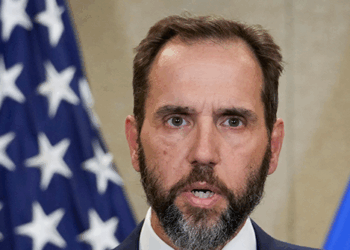A portion of a human skull that was found in eastern Indiana this summer has been determined to be more than 4,200 years old, the authorities said this week.
The bone fragment was found on June 2 on the eroded bank of the Whitewater River in Fayette County, Eddie Richardson, coroner of Fayette County, announced in a statement on Monday.
Officials estimated that the skull part, slightly larger than the size of an adult hand, dates back to 2,300 B.C., Mr. Richardson said in an email on Wednesday.
Although the piece belonged to an adult, it was not clear if it was from a man or a woman or to what regional Indigenous population the person may have belonged, Mr. Richardson said.
He said his office was working with an archaeologist from the Miami Tribe of Oklahoma to determine the tribal affiliation.
“The remains could belong to an individual associated with any number of tribes, including the Shawnee, Potawatomi, Delaware or Cherokee, among others,” Mr. Richardson added.
The first people who showed up in Indiana during the Late Archaic period arrived 10,000 years ago.
They used tools made from bones and antlers and wore ornaments such as beads made of shells, pearls and copper, according to a 2024 report by the Indiana Department of Natural Resources.
The remains were found by a property owner and avid collector of Native American artifacts who was walking along the riverbank, Mr. Richardson said, adding that the person reported the find to the Fayette County Sheriff’s Office. Fayette County is more than 60 miles east of Indianapolis.
With help from Dr. Krista Latham, a forensic anthropologist at the University of Indianapolis, and “rigorous testing” by the University of Georgia, officials were able “to accurately determine the antiquity of this discovery,” Mr. Richardson said in the statement. Ms. Latham did not immediately respond on Wednesday to inquiries about the remains.
“This remarkable discovery is a powerful and humbling reminder that people have walked this land, our home in Fayette County, for millennia,” Mr. Richardson said.
“It calls upon all of us to handle this matter with the utmost respect and diligence,” he added.
Mr. Richardson said his office was working with the Indiana Department of Natural Resources to determine what steps to follow for repatriation of the remains and the management of the site, “ensuring that this ancestral discovery is handled according to cultural and legal standards.”
Johnny Diaz is a reporter for The Times covering breaking news from Miami.
The post Part of a 4,200-Year-Old Human Skull Is Found Along an Indiana Riverbank appeared first on New York Times.




